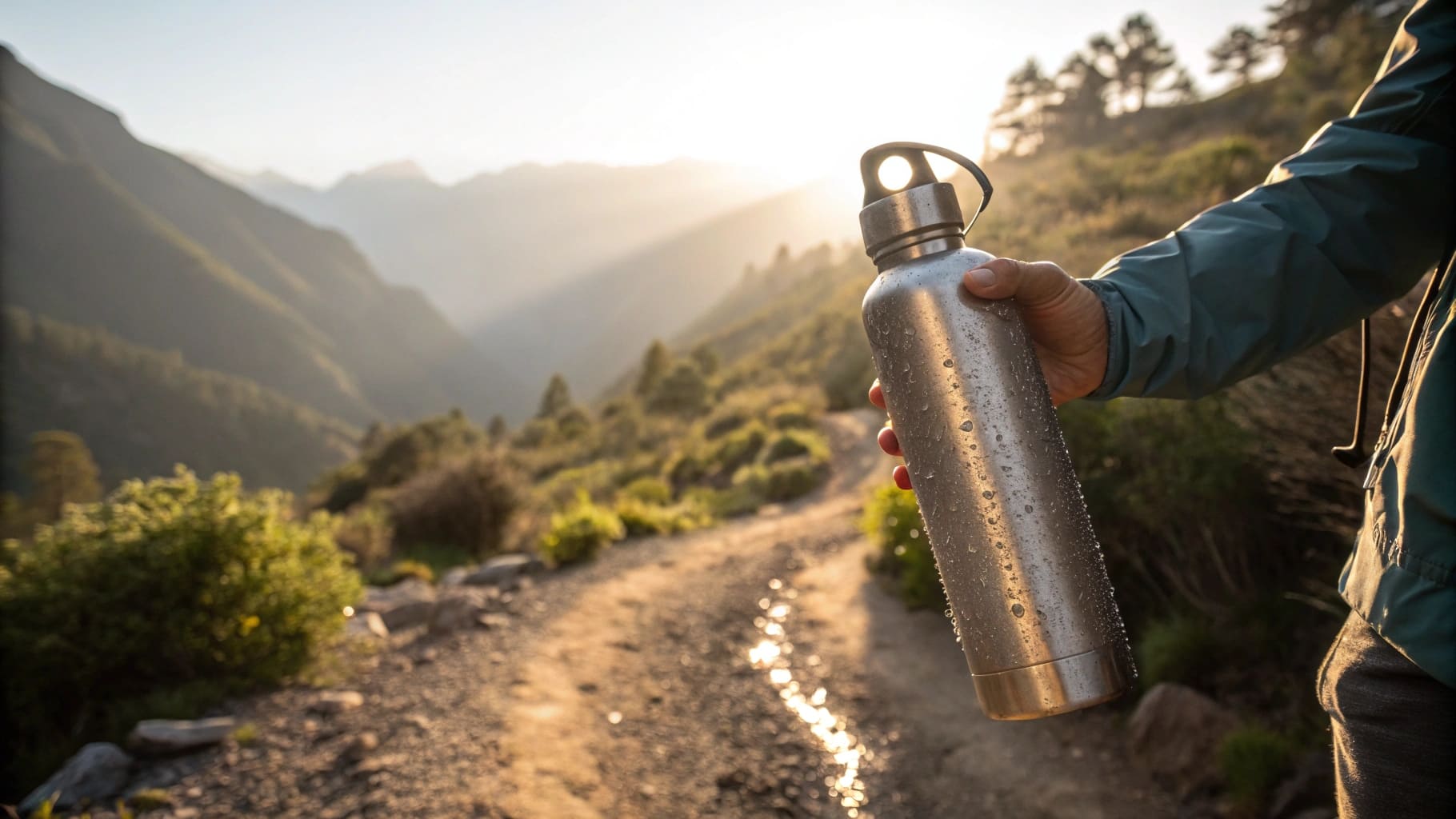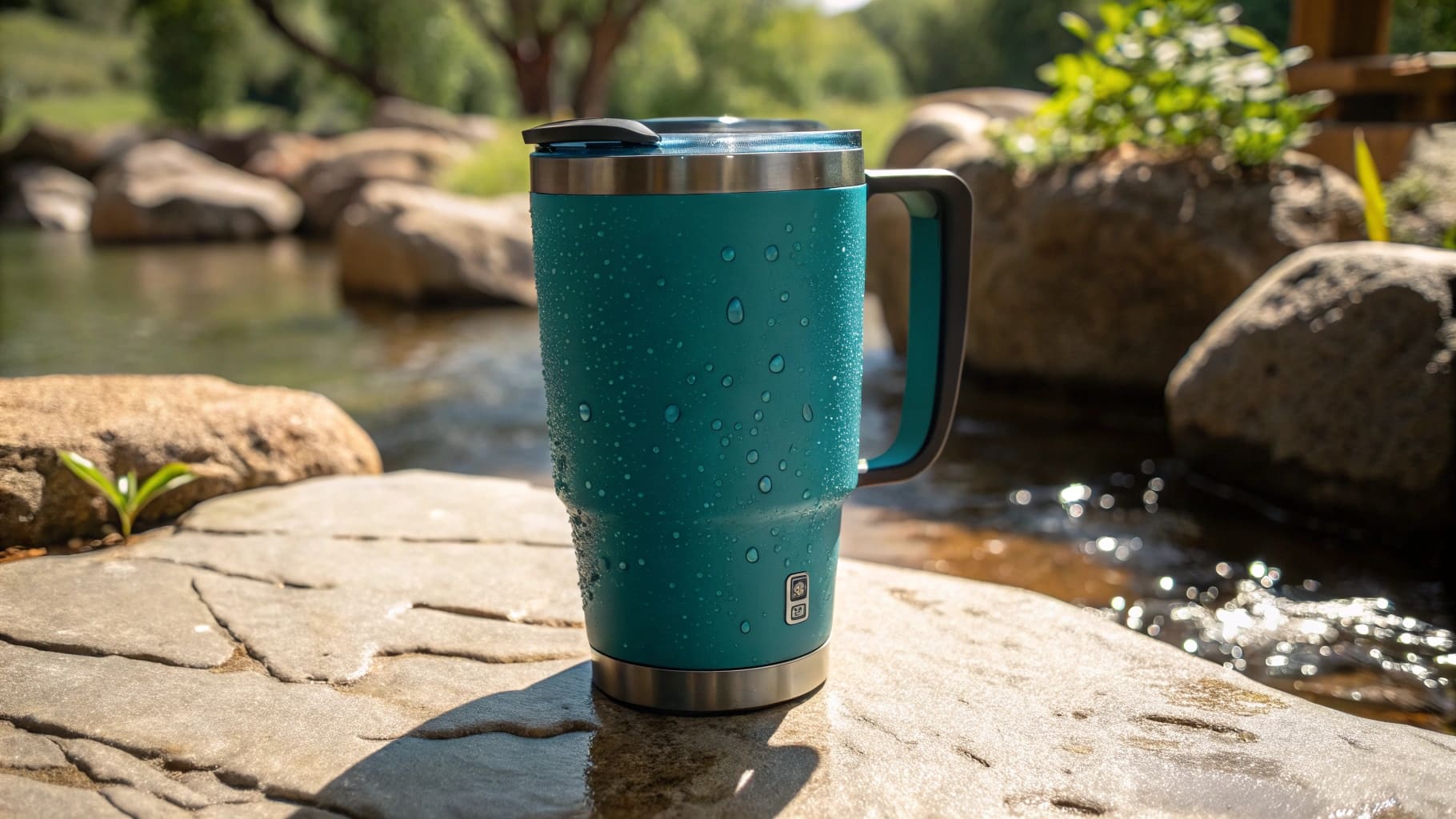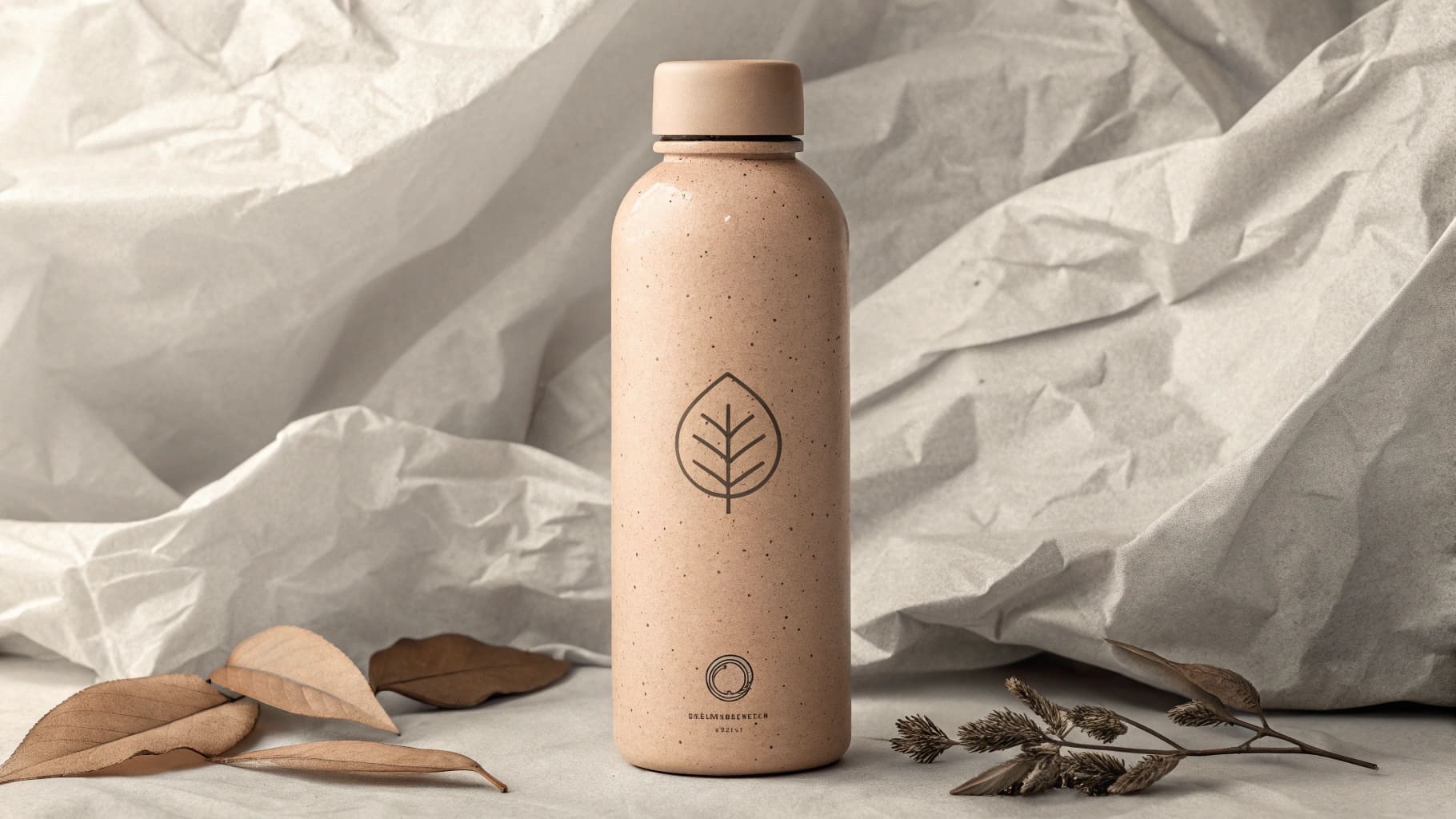Struggling to pick the right insulated bottles for your business? You might miss out on what your customers truly want. I can help you make informed choices.
Choosing insulated bottles means looking at popular sizes for different needs, considering how "brand" applies to your B2B orders (often OEM/ODM), and selecting specific features like lid types or custom finishes. This ensures you stock products that sell.

It's important to get these choices right. Your customers, whether they are end-users or retailers you supply, have specific needs. If you understand their preferences, you can source products that meet demand. This understanding is key to successful procurement and sales. Let's explore how to make the best decisions for your inventory.
How big is the insulated water bottle market?
Wondering if the insulated bottle market is worth your investment? You might worry about entering a saturated or declining niche. But the market is actually growing strong.
The global insulated water bottle market is large and expanding each year. For B2B buyers like importers and private label brands, this growth signals significant opportunity.

The insulated bottle market is not just big; it's dynamic. As someone who has been in this business for years with Icobottle, I've seen its consistent upward trend. We export many containers of these bottles to America and Europe, and the demand keeps increasing.
Key Growth Drivers
What's fueling this growth? Several factors are at play:
- Health and Wellness Trends: More people are focusing on hydration. They carry water bottles everywhere. This is a big driver.
- Environmental Concerns: Consumers are moving away from single-use plastics. Reusable insulated bottles are an eco-friendly choice. This shift is very noticeable.
- Demand for Convenience: People want drinks at the right temperature for hours. Whether it's hot coffee on a cold morning or cold water during a workout, insulation offers this convenience.
Opportunities for B2B Buyers Like You
For procurement officers or startup bosses, this growing market offers many chances.
- Niche Markets: You can target specific groups. Think about athletes, office workers, students, or outdoor enthusiasts. Each group might prefer different sizes, designs, or features. I once worked with a client who wanted a specific type of lid for a bottle aimed at cyclists. We helped them source it.
- Customization (OEM/ODM): This is where businesses like yours, and mine at Icobottle, really connect. You can create unique products with your own branding, colors, and logos. This is crucial for building your brand identity. Mark, I know you rebrand products in Canada; finding a reliable OEM partner is vital for this.
- Expanding Product Lines: If you already sell related products, adding insulated bottles can be a natural extension.
Navigating Competition
A growing market also means more competition. So, how do you stand out?
- Focus on Quality: This is non-negotiable. Customers are willing to pay more for a bottle that performs well and lasts long. This means checking materials, insulation technology, and certifications.
- Unique Selling Propositions (USPs): What makes your bottles different? Is it a unique design, a special feature, superior insulation, or your brand story?
- Reliable Supply Chain: Working with a dependable manufacturer like us at Icobottle ensures consistent quality and timely delivery. This helps you avoid issues like delayed shipments, which I know can be a major pain point.
Here's a simple look at some market segments and their potential:
| Market Segment | Key Demands | Growth Potential |
|---|---|---|
| Sports & Fitness | Durability, Large Capacity, Easy Sip Lids | High |
| Office & Commute | Sleek Design, Medium Size, Leak-proof | High |
| Outdoor & Travel | Robustness, Long Temperature Retention | Medium to High |
| Children & School | Small Size, Fun Designs, Safety | Medium |
Understanding these market aspects helps you make better sourcing decisions. It's not just about buying bottles; it's about investing in products that will meet consumer demand and grow your business.
How to tell if a bottle is insulated?
Unsure if a bottle truly offers insulation? You risk sourcing inferior products that disappoint customers. I'll show you what to look for.
A genuinely insulated bottle usually has double-wall construction, often with a vacuum seal between the walls. Quality materials like 304 food-grade stainless steel are also key indicators of proper insulation.

When you're sourcing insulated bottles, especially for B2B purposes where quality is paramount, it's important to understand what makes them work. As a manufacturer, we at Icobottle pay close attention to these details. The primary technology is double-wall vacuum insulation.
What is Double-Wall Vacuum Insulation?
Imagine two layers of stainless steel with a space in between.
- Two Walls: The bottle has an inner wall and an outer wall.
- The Vacuum: Almost all the air is removed from the space between these two walls. This creates a vacuum.
Why is this important? Heat transfer happens in three ways: conduction (through touch), convection (through air/liquid movement), and radiation.- The vacuum significantly reduces conduction and convection because there are very few air molecules to transfer heat between the inner and outer walls.
- Often, the inner wall might also have a copper coating to reduce radiation.
This construction is what keeps your hot drinks hot and your cold drinks cold for extended periods. If a bottle doesn't have this, it's not truly "insulated" in the way customers expect.
Key Materials to Look For
The most common material for quality insulated bottles is 304 stainless steel (also known as 18/8 stainless steel).
- Food-Grade: It's safe for contact with food and beverages.
- Durable: It resists rust and corrosion.
- Doesn't Leach Flavors: It won't make your water taste metallic.
Sometimes, for extra corrosion resistance, especially for acidic drinks, some high-end bottles might use 316 stainless steel for the inner wall. At Icobottle, we primarily use high-quality 304 stainless steel1 because it offers the best balance of performance, safety, and cost-effectiveness for most applications.
Quick Quality Checks for Buyers
As a B2B buyer like Mark, you need to be sure of the quality you're purchasing, especially when dealing with new suppliers. Here are a few things you or your quality inspection2 team can check:
- Physical Examination: Look for signs of double-wall construction. The bottle should feel substantial, not like a single layer of metal. The mouth of the bottle often shows the two distinct layers.
- Sound Test: Gently tap the side of the bottle. A double-walled vacuum insulated bottle often has a duller, more solid sound compared to a single-walled bottle, which might sound tinnier. This is not foolproof but can be an indicator.
- Temperature Test (if you have a sample):
- Fill the bottle with very hot (not boiling, for safety) water. The outside of the bottle should remain cool to the touch. If it gets hot quickly, the vacuum is compromised or non-existent.
- Fill it with ice water. The outside should not develop heavy condensation. A little bit is normal in very humid conditions, but it shouldn't "sweat" excessively.
- Ask for Specifications: Request detailed specifications from your supplier. These should clearly state "double-wall vacuum insulated" and the type of stainless steel used. Don't hesitate to ask for test reports or certifications if available. I know certificate fraud is a concern, so working with reputable suppliers who are transparent is key.
Understanding these points will help you ensure you're sourcing genuinely insulated bottles that will perform as expected and satisfy your customers. It’s about more than just looks; it’s about the technology inside.
Can you refrigerate an insulated bottle?
Are your customers asking if they can put insulated bottles in the fridge? Misunderstanding this can lead to unmet expectations. Let me clarify this common question.
Yes, you can put an insulated bottle in the refrigerator. However, it won't chill the contents much faster because the insulation works to maintain the liquid's current temperature, hot or cold.

This is a question I hear quite often, both from end-users and sometimes from B2B clients like you, Mark, who want to provide accurate information to their customers. It’s good to understand the physics here.
How Insulation Manages Temperature
As we discussed, an insulated bottle works by creating a barrier – the vacuum between its double walls – that slows down heat transfer.
- If you put a cold liquid inside, the insulation helps keep the heat from the outside environment from warming up the liquid.
- If you put a hot liquid inside, the insulation helps keep the heat of the liquid from escaping into the cooler outside environment.
The bottle itself doesn't generate cold or heat. It just helps maintain the temperature of whatever you put inside it for a longer time compared to a non-insulated container.
Refrigeration: Does It Help?
So, what happens when you put an insulated bottle filled with, say, room-temperature water into a refrigerator?
- The refrigerator will cool the outer surface of the bottle.
- Because of the vacuum insulation, this coldness will transfer very, very slowly to the inner wall and then to the liquid inside.
- Essentially, the insulation is doing its job: it's resisting the temperature change. So, the liquid inside will cool down, but much more slowly than if it were in a regular, non-insulated glass or plastic bottle.
Is it harmful to the bottle? No. Putting an insulated stainless steel bottle in the refrigerator will not damage it. The materials are perfectly fine with cold temperatures. You can even put it in the freezer, though I don't usually recommend filling it completely and freezing it, as water expands when it freezes and could potentially damage the bottle or lid seals if there's no room for expansion.
Best Practice: Pre-Chill Your Liquids
For B2B sellers, it's helpful to educate your customers on the best way to use their insulated bottles for cold drinks:
- Chill the liquid first: The most effective way to have a cold drink in an insulated bottle is to put already cold liquid into it. For example, refrigerate your water or juice in a different container, and then pour it into the insulated bottle when you're ready to go.
- Add ice: Adding ice to a pre-chilled liquid in an insulated bottle will keep it cold for an even longer time.
This way, the insulation works to maintain that desired cold temperature for many hours. If you put lukewarm water in an insulated bottle and then put the bottle in the fridge, you're essentially making the insulation work against the fridge's cooling effect on the contents.
Why This Matters for Your Business
As someone selling these bottles, or providing them to your team, clear communication is key.
- Manages Expectations: Customers will understand how to get the best performance from their bottles.
- Reduces Complaints: Fewer people will be disappointed if they know the bottle isn't a mini-fridge itself.
- Builds Trust: Providing accurate information shows you understand your products. At Icobottle, we believe in educating our clients so they can, in turn, educate their end-users. This is part of good customer service.
So, while you can refrigerate an insulated bottle, it's not the most efficient way to chill the contents. The real magic of insulation is in temperature retention, not rapid temperature change.
Conclusion
Choosing bottles by size, brand (your OEM), and features, plus understanding market and insulation facts, empowers your B2B purchasing. This knowledge helps you succeed.

